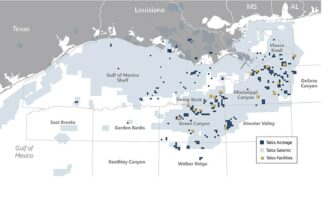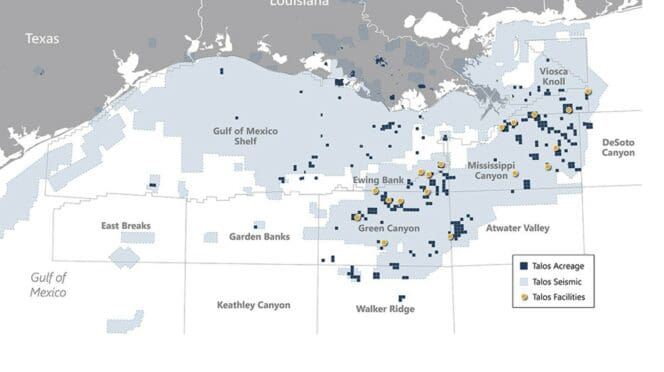Oil and Gas Boom Fuels U.S. Methane Surge
Despite ambitious promises of an accelerated green transition from the government, the U.S. is still experiencing extremely elevated levels of methane emissions each year. As the Biden administration pumps billions into renewable energy, clean technologies, and decarbonisation projects, methane emissions continue to rise year on year with no sign of a reduction any time soon. Methane traps more heat in the atmosphere per molecule than carbon dioxide, which makes it 80 times more harmful than CO2 for 20 years after it is released. The UNEP suggests that cutting methane emissions by 45 per cent by 2030 could help us meet the Paris Agreement’s goal of limiting global warming to 1.5°C.
Since 2021, 158 countries have agreed to the Global Methane Pledge, led by the U.S. and EU. It states that these countries must cut methane emissions by 30 percent from 2020 by 2030. However, recent satellite imagery showed that methane emissions from nine fossil fuel basins had increased by 7 percent compared to 2020 levels. The U.S. is one of the worst performers when it comes to methane emissions, owing largely to a massive increase in oil and gas production in the post-pandemic era. It continues to be the world’s third-largest methane emitter after China and India.
In previous years, the U.S. government has relied heavily on the oil and gas industry to clean up its act. While the U.S. fossil fuel industry emits less methane per unit of energy than in the past, the massive surge in oil and gas production means that the U.S. is producing more methane than before. Oil and natural gas facilities are now the country’s largest industrial source of methane.
In recent years, the Biden administration has put greater pressure on oil majors to clean up operations by identifying and plugging leaks, improving maintenance activities and bringing an end to gas flaring practices. This has been supported by millions in funding from the Inflation Reduction Act (IRA) and other federal schemes. Unlike carbon emissions, which are produced from burning fossil fuels, methane is released during the production and transportation of gas. The U.S. continues to experience a massive methane problem, with thousands of abandoned wells that have yet to be plugged, and leaks along transportation networks.
One of the biggest issues is the failure of the government to accurately measure the extent of the U.S. methane problem. Stanford-led research suggests that the methane emissions from a large share of U.S. oil and gas facilities are three times higher on average than those stated by official government estimates. Oil and gas operations across the country emit over 6 million tons of methane a year. The high levels of methane emissions mainly come from international gas venting and unintentional leaks. It costs oil and gas producers around $1 billion a year in lost commercial value and around $10 billion when harm to the economy and human well-being are considered, according to the researchers.
The Stanford report analyses around one million aerial measurements of U.S. wells, pipelines, storage, and transmission facilities in six of the country’s most productive regions, including the Permian and Forth Worth in Texas and New Mexico; California’s San Joaquin basin; Colorado’s Denver-Julesburg basin; Pennsylvania’s section of the Appalachian basin; and Utah’s Uinta basin. These regions account for 52 percent of U.S. onshore oil production and 29 percent of gas production. The results show that methane levels are likely three times higher than the current government predictions.
The senior author of the study, Adam Brandt, explained, “Costs aside, the main message here is that some regions show emissions at rates well above those the government itself uses to estimate methane losses.” Brandt added, “We hope this will spur government methane inventories toward greater incorporation of remote sensing data at the heart of those estimates.”
The U.S. government is working rapidly to drive methane levels down in the coming years. The Environmental Protection Agency (EPA) aims to implement a legislated fee on methane emissions that exceed a certain performance standard. The EPA is also finalising several new regulatory provisions, which include expanded leak detection and repair, and more consistent use of the latest mitigation technology. In addition, the Bureau of Land Management launched its methane regime, which introduced royalty payments for methane waste on federal land. The Pipeline and Hazardous Materials Safety Administration is also introducing new rules to reduce methane loss from pipelines.
In June this year, the U.S. Department of Energy (DoE) and the EPA announced $850 million in funding for projects that will help monitor, measure, quantify, and reduce methane emissions from the oil and gas sector as part of the Biden administration’s Investing in America agenda. This follows several federal initiatives aimed at reducing methane levels, with agencies taking almost 100 actions in 2023 alone.
The EPA Administrator, Michael Regan, stated, “Today, we’re building on strong standards and historic progress to cut methane pollution and protect communities across the country.” Regan added, “These investments from President Biden’s Investing in America agenda will drive the deployment of available and advanced technologies to better understand where methane emissions are coming from. That will help us more effectively reduce harmful pollution, tackle the climate crisis, and create good-paying jobs.”
By Felicity Bradstock for Oilprice.com














